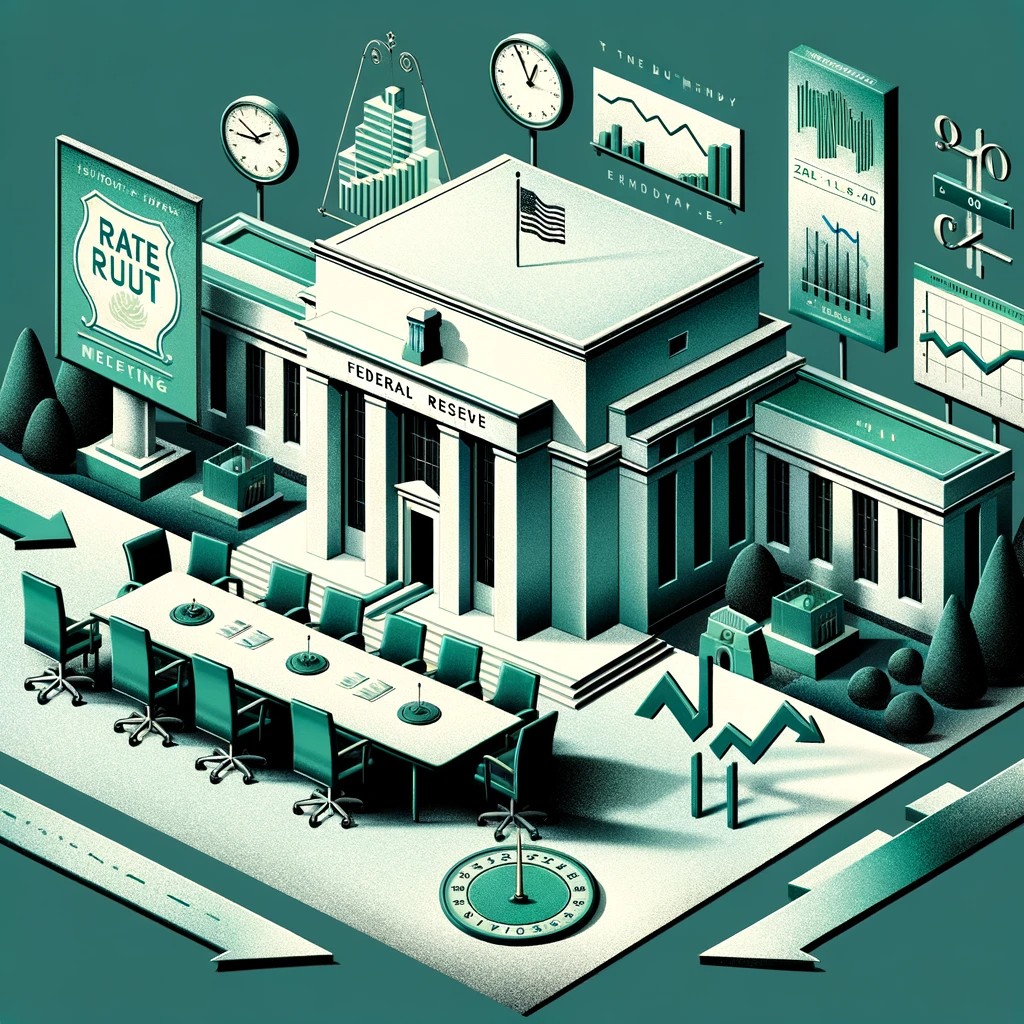The Federal Reserve, under Chairman Jerome Powell, is playing a game of patience that would make any parent on a never-ending road trip envious. As investors clamor for rate cuts, echoing the restless chorus of “Are we there yet?” from the backseat, the Fed’s response remains a steady “Soon, but not quite yet.” This careful approach frames the upcoming Federal Open Market Committee (FOMC) meeting in Washington on January 30 and 31, which, despite the buzz, is not expected to bring any immediate rate cuts.
Testing the Waters: A Prelude to Rate Cuts
While holding rates steady has been the Fed’s mantra for the past few meetings, there’s a growing sense that change is on the horizon. Policymakers have hinted at discussions around the broad parameters for lowering rates, previously only touched upon briefly at their December gathering. Some members have even shown openness to rate cuts in the first half of 2024, contingent on inflation’s trajectory.
However, don’t expect any dramatic announcements at the upcoming meeting. The idea of teeing up a rate cut as early as March seems to be off the table, though economic shifts in the interim could still sway the Fed’s hand. San Francisco Fed President Mary Daly recently described the prospect of imminent rate cuts as “premature,” emphasizing the need for more solid evidence of inflation’s retreat towards the 2% target.
Morgan Stanley’s chief US economist, Ellen Zentner, echoes this sentiment, suggesting that the Fed can afford to wait, as any future rate cuts would not be in response to economic contraction but rather to adjust policy in light of the surprising drop in inflation from its recent peak.
Caution: Learning from the Past
The Fed’s cautious approach also stems from historical lessons. The central bank’s hasty policy easing in the 1970s, before fully taming inflation, is a cautionary tale that today’s policymakers are keen to avoid. Even Paul Volcker, revered as one of the greatest US central bankers, faced challenges in the 1980s with policy reversals that led to a deeper economic downturn.
Atlanta President Raphael Bostic has voiced concerns over this, warning against a yo-yo pattern of rate changes. The consensus among economists, including Claudia Sahm, a former Fed staffer, leans towards a delay in rate reductions until May. However, once the Fed decides to act, we could witness significant cuts, particularly if inflation trends favorably.
Next week’s fresh data on the Fed’s preferred inflation gauge and a preliminary report on the fourth quarter’s gross domestic product will be critical in shaping these decisions. Bloomberg Economics’ chief US economist, Anna Wong, anticipates the core measure of the Fed’s favored inflation gauge to fall below 2% on an annualized basis over various periods.
Despite recent projections indicating a 75 basis-point rate cut in 2024, the Fed maintains a careful stance. Bostic, in a recent Fox Business interview, emphasized his openness to recalibrating his views on rate cuts based on upcoming data, yet remains committed to ensuring inflation is firmly on a downward path.
A key decision at the FOMC meeting will be whether to alter the forward guidance on future policy actions in its post-meeting statement. Since March 2022, the Fed has raised rates by more than five percentage points, and its current stance leaves open the possibility of further hikes. However, with financial markets buoyed by hopes of lower rates, some hawkish FOMC members may be hesitant to abandon this guidance.
The backdrop of the November presidential election adds another layer of complexity to the Fed’s deliberations. Despite assertions by Morgan Stanley economists that the election won’t sway monetary policy, the central bank could still find itself in the crosshairs of political debate, especially if Donald Trump, a leading Republican contender, perceives Fed rate cuts as advantageous to President Joe Biden.





